11 Types of Mustard: Complete Home Cook’s Guide
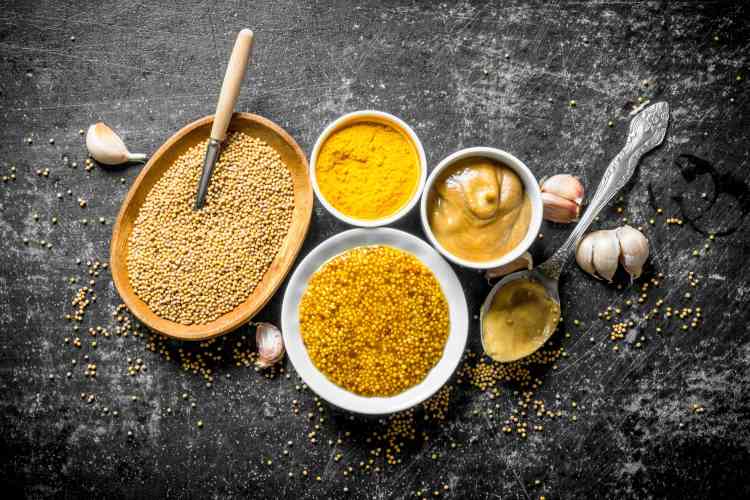
It might surprise aspiring chefs to learn that there are types of mustard in the food world beyond the stuff in the bright yellow squeeze bottle. Depending on the culture, you can find regional mustards that elevate this humble spread to the realm of a gourmet sauce.
You can learn more about how to use these different types of mustard by taking some cooking classes near you in cities around the U.S., from Kansas City to NYC. These professionally-led sessions will focus on the use of mustard in unique recipes where bold flavor is key.
There are even online cooking classes to learn about different kinds of mustard from your own kitchen. In the meantime, this guide can be your starting point to the world of mustard varieties!
So, just how many varieties of mustard are there in the condiment universe? And how does this fascinating flavor enhancer add to the taste of your favorite entrées and side dishes?
We've gathered the story on how mustard is transformed from seed to spread and compiled a list of the different kinds of mustard available. Read on to learn what's what in the world of mustard and how to use it to its most delicious potential.
Jump to Section
What Is Mustard?
Mustard is a condiment that ranges in flavor from earthy to fiery hot to honey sweet. This versatile ingredient is used in everything from marinades to sauces to dips. It's a natural choice for adding a blast of brightness to more mellow elements in sandwiches, burgers and sausages — the most familiar uses for all types of mustard.
But mustard also brings depth to recipes where a touch of earthy warmth is welcome, whether it's used to elevate meat-centered entrées or transform salads into superstar sides. While many discerning diners tend to think of mustard as a deli-only delight, mustard has a place at the table in just about any lunch or dinner dish you can think of.
Mustard has a wide-ranging history in China, Africa and Europe. The plant has been around since prehistory, and its minuscule seeds even merit mention in the Bible.
Mustard paste was used in China as a form of appetizer and blended with grape juice by the Romans to make a substance called burning must, which in Latin translates as "mustum ardens," the origin of the word "mustard." Mustard balls were used in England in the Middle Ages as a dry good that could be turned into mustard when needed.
It's a long way from this early form to the zippy, squeezable spread you have sitting in your fridge!

How Is Mustard Made?
The basis for all varieties of mustard is mustard seed, a plant that has been cultivated for thousands of years. The mustard plant is a leafy green. Its tall flowering stalks produce white, brown or black seeds. Pods called siliques that grow along the stem hold the seeds that are harvested for mustard making. This process entails removing the siliques from the stem and drying them out until they crack open.
The seeds are then removed and ground into mustard powder, which becomes the base for various types of mustard. In addition to the seeds, mustard leaves are also edible and can be used in salads and cooked recipes that call for robust greens.
For its complex flavor and adaptable personality, mustard is essentially a humble mix of crushed mustard seeds, vinegar and spices that season up the base in a number of different ways. The type of seed used determines the level of heat, with white mustard seeds providing a more mellow flavor profile than yellow or brown seeds.
Enzymes in the acid and other liquid ingredients influence the strength of the flavor and heat. Home chefs can easily experiment with making their own mustard by using a base of jarred mustard powder or whole seeds that can be crushed before use. Adding vinegar, wine and spices creates custom flavor profiles that suit any recipe calling for a mustard kick.
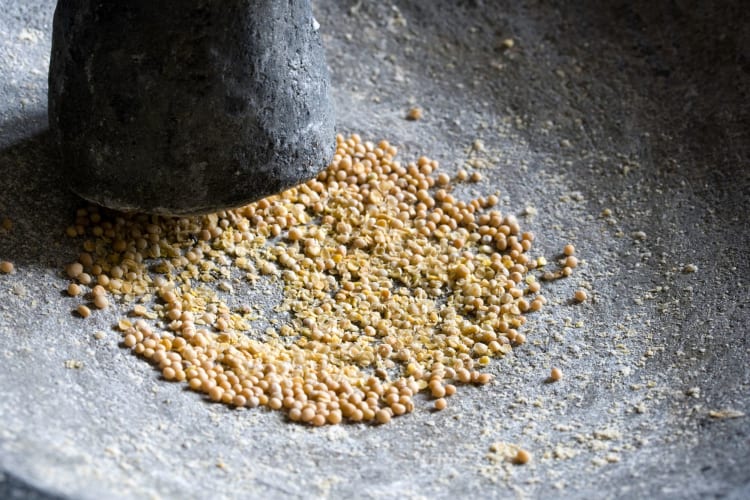
11 Different Types of Mustard and Their Uses
1. Yellow Mustard
Hot dog and hamburger lovers are familiar with yellow mustard, perhaps the most common type of mustard in the U.S. The French’s company introduced the original yellow mustard in 1904 at the St. Louis World's Fair. It was quickly adopted as a hot dog topping and has been holding steady ever since.
This zesty and bright flavor is a favorite on simple sandwiches and helps give deli salads and deviled eggs a flavorful punch. It's also the most affordable type of mustard, which makes it easy to keep a bottle or two handy.

2. Honey Mustard
The addition of honey to the basic mustard recipe turns the simple taste into something remarkable. The sweetness mellows the heat to achieve a one-of-a-kind flavor combination. Honey mustard shines up simple ham sandwiches and turns potato salad into a rave-worthy addition to potlucks and picnic spreads.
Though bottled honey mustard is easy to find in grocery stores, you can make your own by combining honey, mustard, vinegar, a bit of mayonnaise and your favorite spices. This recipe is an easy way to begin experimenting with your first custom-made types of mustard.
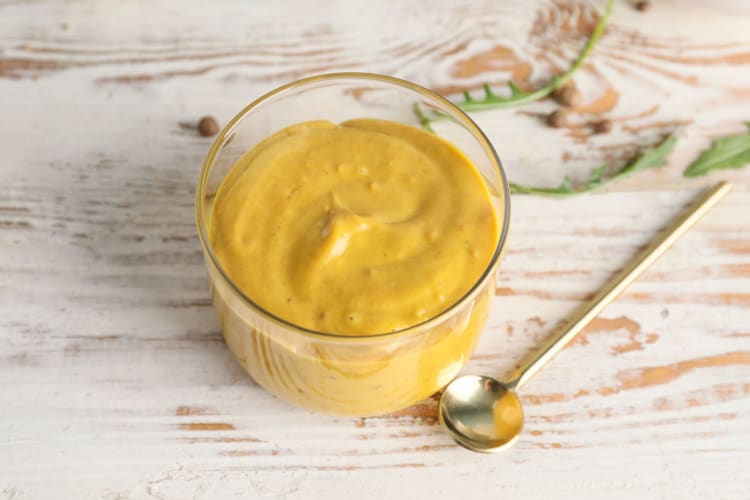
3. Whole Grain Mustard
When some of the mustard seeds in the mix are left whole or half-crushed, the result is called whole grain mustard. The consistency of whole grain types of mustard is closer to a paste than that of the more liquid yellow mustard.
With this mellow and seedy spread, this type of mustard is excellent for adding earthy warmth when brushed on roasted potatoes, mixed in with your twice-baked potato filling or served up with scrambled eggs.
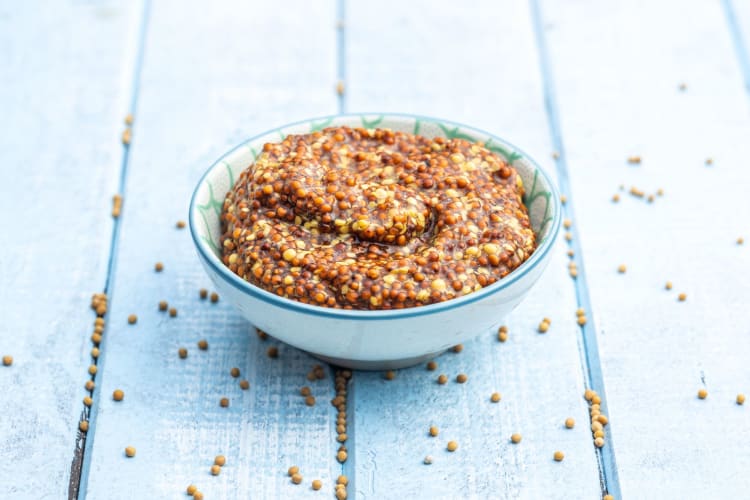
4. Spicy Brown Mustard
Earthier, spicier and grainier than standard mustards, brown mustard is a rustic take that contains a higher count of brown mustard seeds. In spicy brown mustard, the finished mix contains the bran of the seeds, which creates a slightly gritty texture.
This type of mustard also goes by the name "deli mustard" due to its friendly partnership with sandwich meats like salami, roast beef and pastrami. And if soft pretzels are the snack you choose, then spicy brown mustard should be the spread you use to add feisty flavor to every bite.
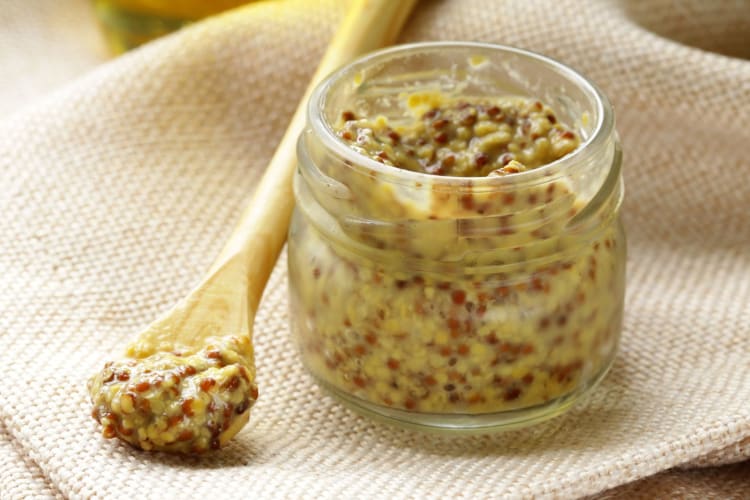
5. Sweet Mustard
Heading in a sweeter direction than even honey mustard, sweet types of mustard add brown sugar to a coarse mustard base to achieve a unique flavor. This type of mustard is easily made at home by adding your own brown sugar to yellow mustard and tossing in your favorite seasonings to taste.
More than brighter types of mustard, sweet mustard is an ideal option for basting pork, fish and chicken before baking or grilling. Daring cooks can even find recipes for mustard soup that use sweet types of mustard as a main ingredient.
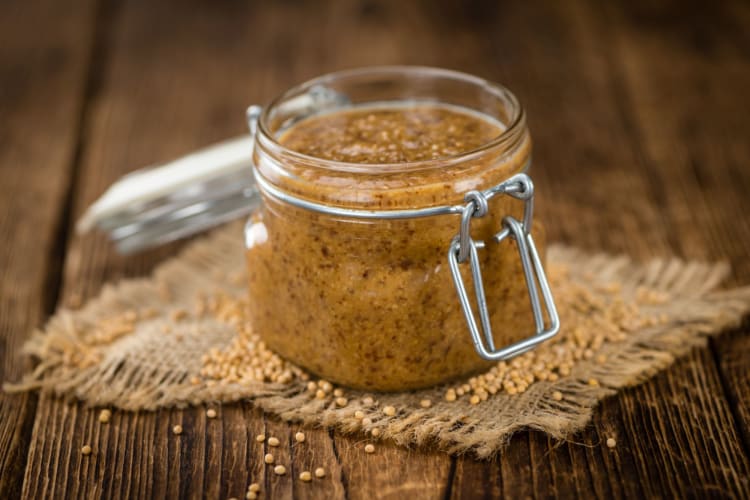
6. Fruit Mustard
They may seem mismatched, but dried fruit and mustard are a luxe blend that creates unexpected harmony when properly prepared. Dried fruit like plums and apricots are mixed with mustard and vinegar and left to ferment to bring out the best of all flavors.
The result is something of a spicy jam, an intriguing addition to your charcuterie or cheese board or for serving with wine. Though the name is similar, fruit mustard is different from mustard fruits, an Italian creation that involves soaking candied fruits in mustard syrup. Fermenting for Foodies has a recipe for fruit mustard that will put a sweet spark in any culinary creation!
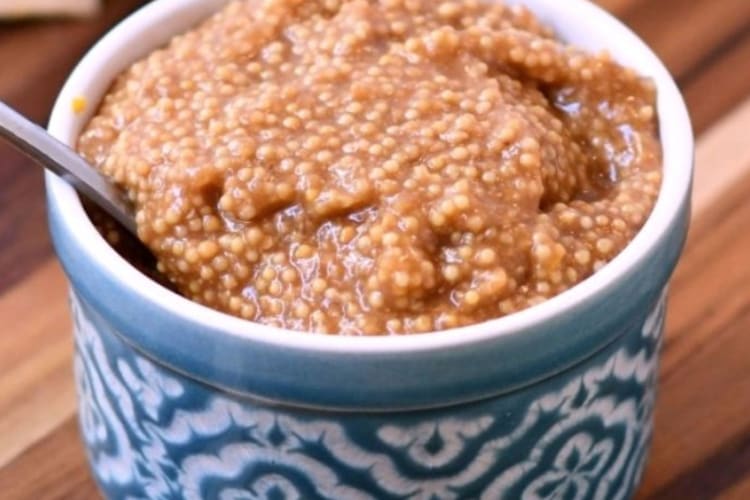
7. Dijon Mustard
Dijon mustard originated in the Burgundy region of France, though unlike Champagne, it can be created outside of the area and still bear the name. You may be familiar with Grey Poupon, which is one of the best-known Dijon mustard brands. Brown mustard seeds and white wine blend to form a sophisticated spread that upgrades any condiment collection.
Dijon mustard is the perfect type of mustard for bringing a mellow flavor to a ham and Swiss sandwich and makes an unexpectedly perfect pairing for steaks of all sorts. It can be used as a marinade to tenderize the meat and cooked up as a crust or added to the table as a dipping sauce.
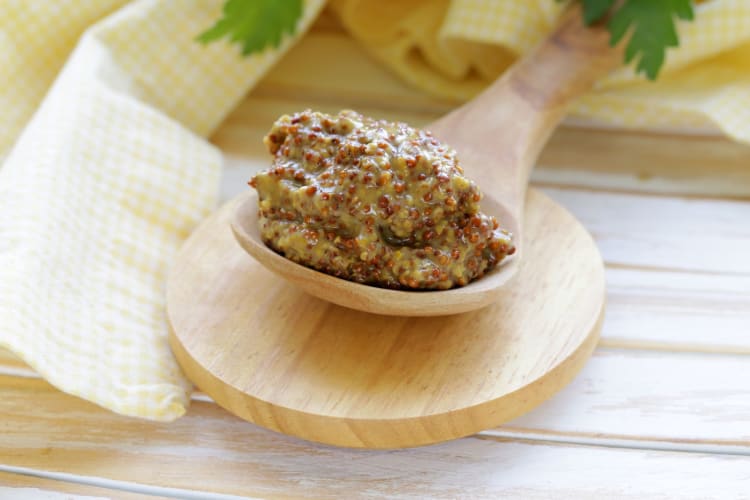
8. Spirit Mustard
Spirit mustards include various types of distilled liquors to enhance the flavor to elegant heights. Fruit brandy, cognac and whiskey are all fair game when it comes to creating this gourmet type of mustard. Though not officially a spirit, beer is also included in this type of mustard.
Not surprisingly, these types of mustards are popular in bar and pub settings, where the flavors of the food and drink blend expertly into a peak dining experience. Try spreading spirit mustard on slices of roast or shaking it into a vinaigrette to give your salad a powerful pick-me-up.
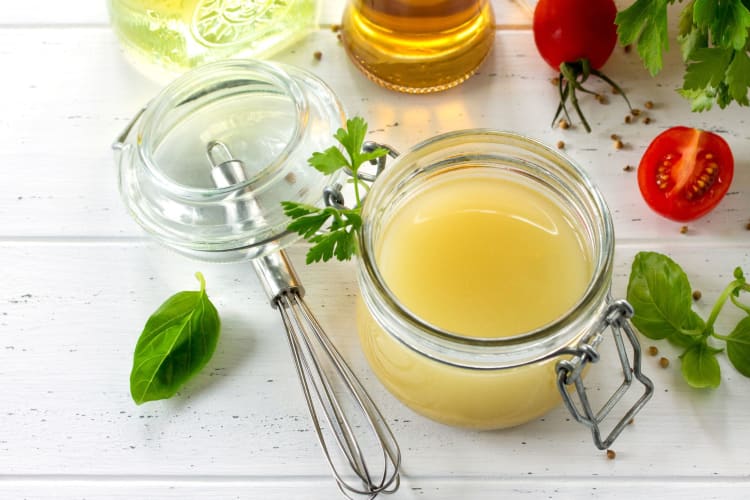
9. English Mustard
English mustard blends yellow and brown mustard seeds to achieve a vivid yellow hue and a sharp flavor. Rather than using vinegar, English mustard uses cold water, which provides extra heat that has been known to clear sinuses!
As a mix-in for coleslaw, a flavoring for mashed potatoes and a base for salad dressings, English mustard is the perfect option when a little added fire is needed to help flavor up your dish. It also makes an excellent spread for corned beef sandwiches, in keeping with the British culinary spirit!
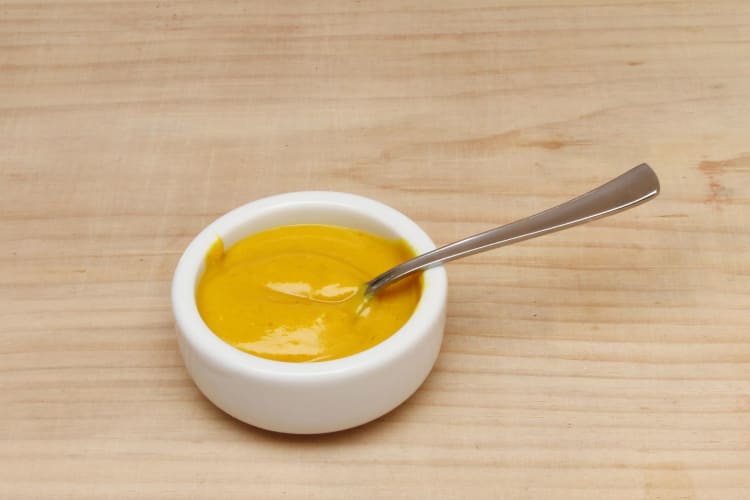
10. German Mustard
More than maybe any other culture, Germany has a passion for a vast array of mustard mash-ups, which makes categorizing German mustard tricky. The most familiar form of German mustard contains white wine, similar to Dijon but with more tartness.
Some German mustards add horseradish to punch up the spice. These spreads are your go-to options for dipping pretzels, rubbing on roasts and slathering on sandwiches made with dark breads like pumpernickel or rye.
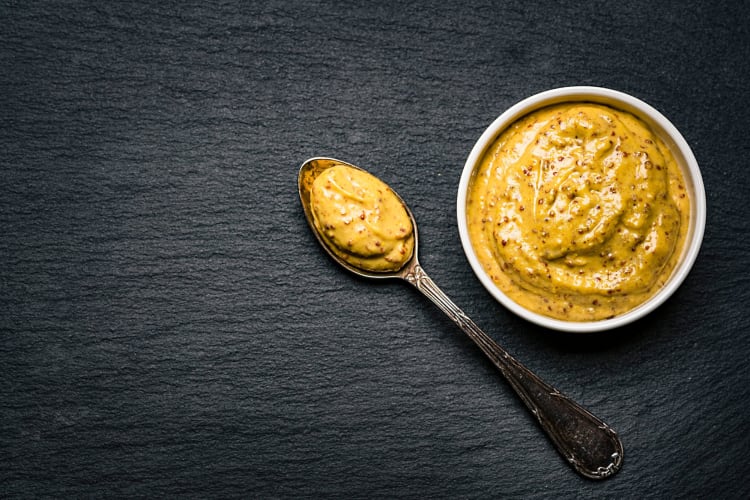
11. Chinese Hot Mustard
When it comes to more fiery types of mustard, a little bit of Chinese hot mustard goes a long way! The added strength comes from extra myrosinase, the spicy enzyme that gives mustard its powerful bite.
Available in powder or paste form, Chinese hot mustard is a staple in Asian restaurants for topping egg rolls, as well as adding a fun flame to fried rice, pork and chicken. Try a little before adding more to make sure your tongue can stand the heat.
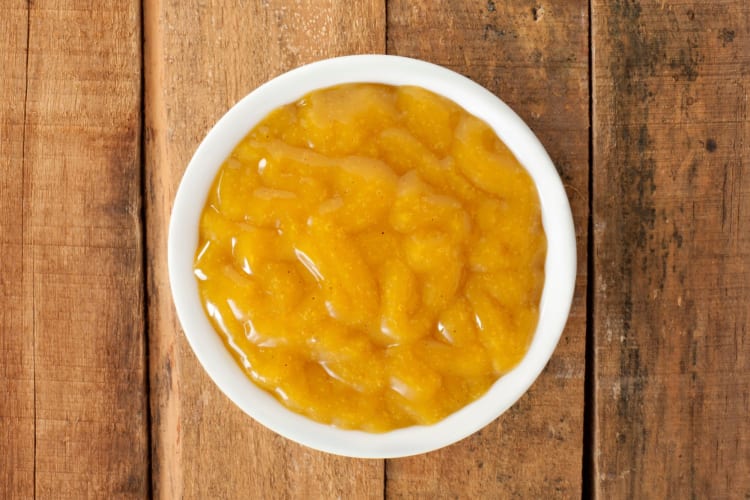
Whether you're enjoying hot dogs in Chicago, digging into the best burger in NYC or plating up delicious wonders at a sweet summer BBQ, trying different types of mustard with your meal is a must for your most memorable dining moments.
This flexible spread is more than just a go-to condiment that jazzes up casual food. It's an unassuming creation with a long history and endless variations that give it a proud heritage all its own.
While it may keep a low profile in the home cooking sphere, there are enough different types of mustard to add new layers of magical flavor to just about anything you create in the kitchen.
On your next shopping trip, take a spin down the condiment aisle and look past the usual selections to see what sorts of spicy wonders await you in the world of mustard. Better yet, start with a basic blend and throw in your favorite flavorings to see what types of mustard you can come up with on your own.
For even more ways to explore your favorite foods, check out other experiences happening on Cozymeal.



FOOD FOR THOUGHT?
Join the conversation.